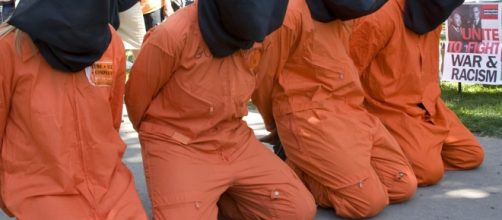In the aftermath of the September 11 attacks, the Bush administration introduced a number of counter-terrorism measures. Among them, intelligence agencies like the CIA applied what was termed "#enhanced interrogation" techniques in an effort to pressure detainees into divulging valuable information. These Enhanced Interrogation Techniques included sleep deprivation, subjection to deafening noise, stress positioning, waterboarding, subjection to extreme temperatures, sexual or religious humiliation, food or drink deprivation, confinement in small spaces, striking and slapping, as well was threatening to harm the prisoner's family.
The use of such methods became a subject of discussion in the White House in 2002, however, the Bush Administration maintained the legality of the applied methods and rejected suggestions that the enhanced interrogation techniques amounted to torture. According to CIA reports 30% of prisoners questioned were subjected to enhanced interrogation. Believing enhanced interrogation to be torture, President Obama banned the techniques by executive order in 2009.
The Human cost of enhanced interrogation
15 years on, the long-term effects of these torture methods have now come to light. Several former detainees have described their plight. Many suffer from post-traumatic stress syndrome and have been unable to recover fully.
Some have developed depression, while others have been affected by psychosis.
Hussein al-Marfadi is constantly haunted by images of aggressive dogs in a confined space. He has a permanent headache and suffers from severe insomnia. Lutfi bin Ali has recurring nightmares of suffocating in a well, and Majid Mokhtar Sasy al-Maghrebi can no longer tolerate noise because he was subjected to deafening sounds during interrogations.
Ex-Guantanamo Bay detainee tells his story https://t.co/j8pSJO4FuT via @YouTube
— wordnews27 (@anita_alig) March 18, 2017
Recently disclosed medical records of interviews with prisoners have indicated that dozens of former detainees at secret CIA prisons and #Guantanamo Bay suffer from long-term mental health problems which can directly be linked to their time in #Guantanamo.
President Obama failed in his attempts to close down Guantanamo Bay
Though President Obama reduced the number of prisoners held at #Guantanamo Bay from 242 when he took office to 41, he failed in his attempt to close the prison down. Reiterating time and time again that the facility was counterproductive to national security and in fact represented a breeding ground for terrorism, Obama was ultimately stifled in his efforts by congress.
Obama Says Guantanamo Bay Must Close https://t.co/CaNkRjKSAv via @YouTube
— wordnews27 (@anita_alig) March 18, 2017
Trump Guantanamo Bay Policy
Trump and Obama famously clashed on Guantanamo during the 2016 presidential election. Vowing to keep the notorious detention center open, Trump promised to "load it up with some bad dudes" during his election campaign.
The current strategy of the trump administration remains unclear, however, a draft executive order obtained by several news agencies has stated that the administration would cease the transfer of prisoners pending a review and keep the facility open as "a critical tool in the fight against international, radical Islamist groups."
Stressing that the draft was not official yet, the White House failed to clarify Trump's position on #Guantanamo. In one of his first interviews after taking office earlier this year, however, Trump made his position on enhanced interrogation quite clear.
President Trump on waterboarding: “I feel it works,” but will rely on team’s guidance and do everything “legally." https://t.co/89o6NhpsWh pic.twitter.com/vWoL5W2ycc
— ABC News (@ABC) January 26, 2017

